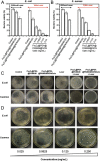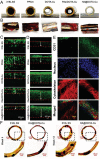Nitric Oxide: Physiological Functions, Delivery, and Biomedical Applications
- PMID: 37632708
- PMCID: PMC10602574
- DOI: 10.1002/advs.202303259
Nitric Oxide: Physiological Functions, Delivery, and Biomedical Applications
Abstract
Nitric oxide (NO) is a gaseous molecule that has a central role in signaling pathways involved in numerous physiological processes (e.g., vasodilation, neurotransmission, inflammation, apoptosis, and tumor growth). Due to its gaseous form, NO has a short half-life, and its physiology role is concentration dependent, often restricting its function to a target site. Providing NO from an external source is beneficial in promoting cellular functions and treatment of different pathological conditions. Hence, the multifaceted role of NO in physiology and pathology has garnered massive interest in developing strategies to deliver exogenous NO for the treatment of various regenerative and biomedical complexities. NO-releasing platforms or donors capable of delivering NO in a controlled and sustained manner to target tissues or organs have advanced in the past few decades. This review article discusses in detail the generation of NO via the enzymatic functions of NO synthase as well as from NO donors and the multiple biological and pathological processes that NO modulates. The methods for incorporating of NO donors into diverse biomaterials including physical, chemical, or supramolecular techniques are summarized. Then, these NO-releasing platforms are highlighted in terms of advancing treatment strategies for various medical problems.
Keywords: biomedical applications; delivery; donors; nitric oxide; physiological functions.
© 2023 The Authors. Advanced Science published by Wiley-VCH GmbH.
Conflict of interest statement
The authors declare no conflict of interest.
Figures













References
-
- Gow A. J., Farkouh C. R., Munson D. A., Posencheg M. A., Ischiropoulos H., Am. J. Physiol. Lung Cell Mol. Physiol. 2004, 287, L262. - PubMed
Publication types
MeSH terms
Substances
Grants and funding
LinkOut - more resources
Full Text Sources
Medical
Molecular Biology Databases
Miscellaneous
